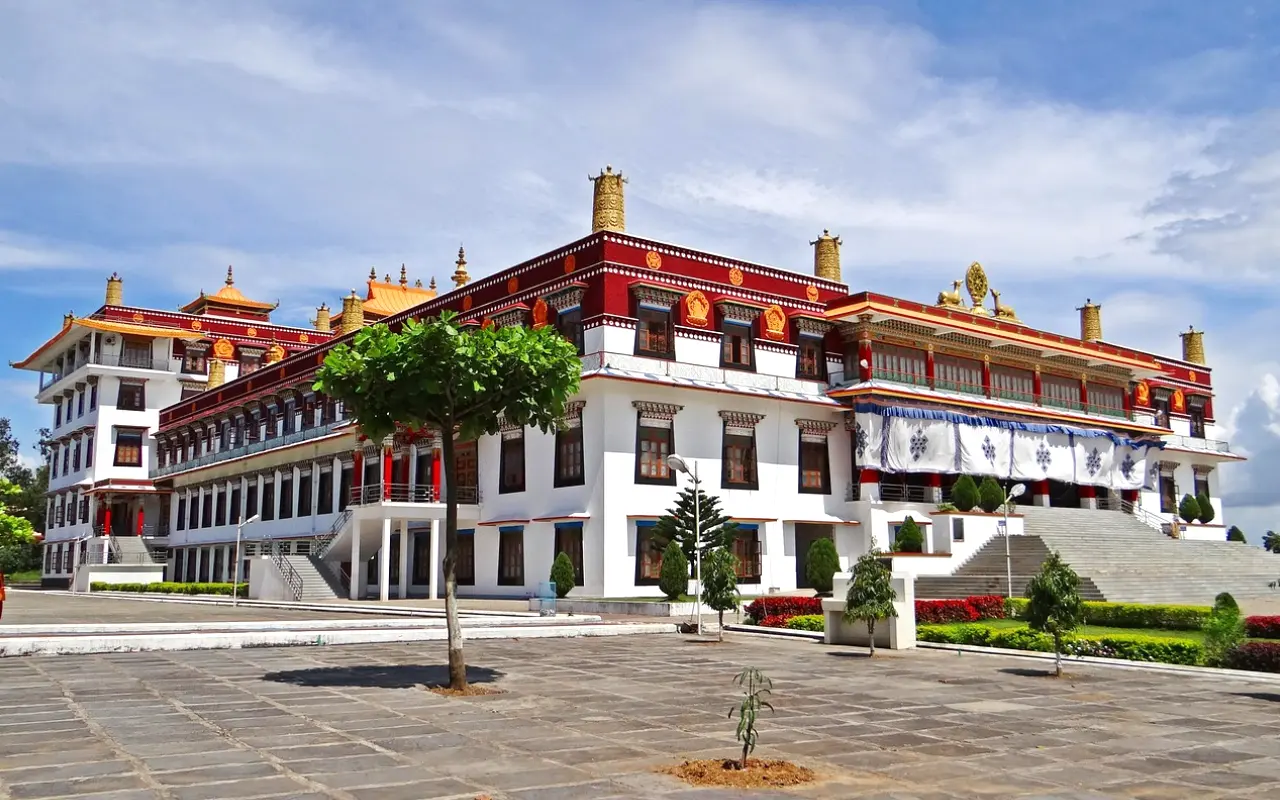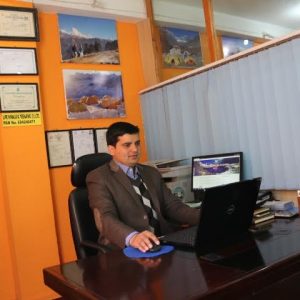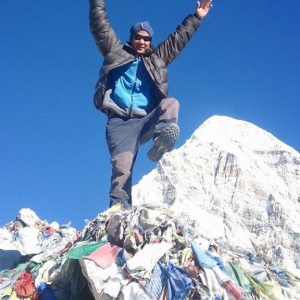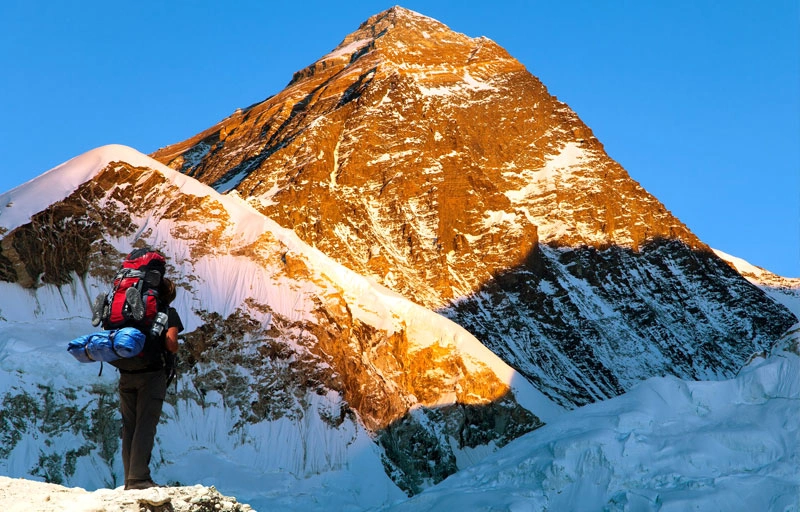When is the Best Time to Visit Tibet? Weather, Festivals & Views Compared

When you visit Tibet, “The Roof of the World“, the timing is everything. The weather, festivals, and beautiful views can have a significant impact on your trip. When you select the right month to visit, you will create unforgettable memories among the towering peaks and amazing spiritual experiences.
The weather in Tibet varies greatly because of its high elevation; it has cold winters, moderate summers, and frequent temperature swings. At high elevation, the air is thinner, sunshine is intense, and the weather changes quickly, so you must consider these factors and when to visit Tibet for the best comfort and safety in your travels.
This guide will help you determine the best time to visit Tibet while focusing on weather, festivals, and scenery. During the seasons, we will show you the times when valleys are blooming, cultural Tibetan events are happening, and when the Himalayan Mountains show themselves clearly; all of which use seasonal change.
Continue reading if you need specific information for your planned travel time on when to visit Tibet for adventure, culture, or sightseeing. Discover the best season for your preference for things such as crowds and celebration days, pristine landscapes, or being alone for spiritual contemplation.
Overview of Tibet’s Travel Seasons
Tibet’s travel year is divided into three seasons: high season from April to October, when the weather is typically stable and clear skies make for the best routes. The high season is the absolute most popular period of time for the visiting season for tourists. Travelers wanting a good temperature and spectacular mountain views will visit during the high season.
The shoulder seasons are March and November, and this time has fewer crowds and moderate weather. The shoulder seasons are best for tourists wanting better conditions, and there will be mostly quiet hiking on popular trails, or visiting cultural sites.
Low season runs from December to February and is unforgiving when the winter climate moves in; it is cold and snowy in most places in Tibet. Although it is physically challenging to explore, the low season provides a remarkable way to dive deep into Tibet, as the depth of culture in the region is revealed. Tourists can be at peace with few visitors, subtracting the touristic chaos, and enjoy a completely different experience.
Weather in Tibet: Season-by-Season Guide
1. Spring (March–May)
Spring in Tibet, naturally occurring between the months of March and May, involves melting snow and blue sky. It is a refreshing time to travel, and yellow and white blossoms add a sparkle to the cultural landscape around Lhasa and Shigatse.
The spring weather is just right to explore Everest Base Camp and many monasteries during the cool then warming spring season. The nice spring weather and sunny days make spring a popular travel time for trekking and seeing plenty of temples and spiritual pilgrimage places, with fewer crowds than in summer.
In March, it is colder, drier, and can be from around -2C at night to a high of 12C in the day in Lhasa, a sunny but sometimes windy temperature. So, wearing layers is key to keeping warm on your trek.
By May, it is generally a full-blown spring season, warmish around Lhasa at 20 °C, and mostly dry. The visibility is so crisp with clear skies and blossoming valleys, resulting in amazing views of the best Tibetan landscapes, which, for many travelers, is part of the best time to travel to Tibet.
2. Summer (June–August)
June to August is considered summer in Tibet, and is the warmest time of the year with long daylight hours and outdoor options in the lushest landscapes in eastern Tibet. The summer season is considered by some to be the best time to visit Tibet for travelers who want lots of greenery and outdoor travel options in full color.
The summer season actually begins in June, along with the monsoon season. As far as the monsoon is concerned, the rains are mostly light, which mostly occur at night. The daytime high temperatures in Lhasa are in the 10-23 °C range. This is ideal weather for temple visits and enjoyable trekking.
July and August sunny days will be interrupted by long periods of daytime rain, mostly at the end of the day. This means visibility may become challenged, and travel may become hindered. Consequently, these months are still exceedingly popular for the Kailash Mansarovar Yatra and overland tours that offer average hikeable temperatures and the best scenery possible.
3. Autumn (September–October)
Visiting Tibet in Autumn gives travelers a chance to take advantage of some very clear and stunningly beautiful landscapes, weather, and crisp air with relatively calm and pleasant temperatures ranging from 8°C to 20°C. The idea is to take full advantage of the best views of mountains and lakes, something that is predictable when visiting in September and October.
The trekking on the Everest, Kailash, and Namtso routes would be excellent at this time of the season. The combination of cool, dry conditions with autumn foliage gets you some of the best scenery while experiencing moderate crowds, the best time of the year to visit Tibet for nature lovers and adventure seekers.
During autumn, the daytime temperature ranges from 13 to 17 °C. You will get a crisp atmosphere with amazing scenes that are perfect for photographers and outdoor lovers.
Autumn is loaded with incredible mild and dry weather conditions, welcoming minimal rainfall, and stunning views, making it one of the best options for traveling to Tibet and the Tibetan plateau. If you want the climate and want to capture some breathtaking views, then autumn brings you mild weather that is very favorable.
4. Winter (November–February)
Winter in Tibet is the period from November to February. While it is still cold, it is dry and peaceful. You can get amazing views above Lhasa, despite the low temperature. This is often referred to as the best time to visit, considering the cultural experience, travel, and tourism, for those looking for peace.
November weather conditions are ideal for budget travel, where lower tourist numbers are a benefit. The days are still clear, hotel and transport prices are cheaper because of the weather. Some remote trekking routes may be closed because of snow, and you may have to improvise.
December to February are the coldest months in Tibet, with daily temperatures below 0 degrees Celsius at night and with daytime highs at about 10-15 degrees Celsius in Lhasa. Snow levels are rare, but on some days, high altitude paths may be blocked. With the dry air and sunshine, visibility is excellent for the view of the mountains.
Winter in Tibet may be too extreme for some trekkers, but the tranquility and clear conditions make it the best time to visit Tibet for budget travelers. Winter visitors will find peaceful monasteries, stunning clear views, and off-season discounts.
Best Time to Visit Based on Festival Calendar
A. Losar (Tibetan New Year)
Losar, which takes place sometime in February or March, is the largest festival in Tibet and very lively with a lot of dancing, music, and family gatherings. For those interested in culture, this is also the best time to visit Tibet to see authentic traditions and families reuniting joyously.
Losar lasts up to fifteen days, with the first three being the most significant, embarking on prayers, new clothing, cleansing rituals, and special foods. Losar provides a festive environment where people can witness both ancient customs and Buddhist customs in Lhasa and in the villages.
B. Saga Dawa Festival
Saga Dawa, which happens in May or June, celebrates the birth, enlightenment, and death of Buddha. Pilgrims will travel to Mount Kailash for circumambulation, filling the path with devotion and colors when they are on pilgrimage. It is one of the best times to travel to Tibet for spiritual feelings.
Saga Dawa expresses tremendous spiritual significance. It is marked with prayers, raising prayer flags, and ritual processions. You will not be able to find a more genuine time to visit Tibet than during Saga Dawa, where you can be immersed in the most sacred moments of Tibetan Buddhism.
C. Shoton Festival

Shoton, or Yogurt Festival, happens in August and shines with Tibetan opera and the dramatic exposition of enormous Thangka paintings at Drepung Monastery. For festival enthusiasts, it is the ideal time to visit Tibet for music, drama, and community celebration.
Monks finish their retreats, and locals receive them back with offerings of yogurt, parades, and outdoor shows. The festive atmosphere in Lhasa profoundly demonstrates the exciting life of Tibetan culture.
D. Harvest Festival
The Harvest Festival (“Ongkor”) takes place each August or early September and is recognized as a rural tradition and humanity’s humble gratitude to deities for a sufficient crop. Music, dance, rituals, and horse racing are all excellent reasons to visit Tibet at this time for rural celebratory events.
Villagers put on traditional or festival attire, encircle fields using flags and music to present their hopes for bounty to deities, and to give thanks to nature. The Harvest festival is a rich communal demonstration of Tibetan agricultural culture at its best.
Best Time to Visit Tibet for Specific Interests
| Interest | Ideal Time | Notes |
| Trekking (Everest, Kailash) | April–May & Sept–Oct | Great visibility and trails are safe |
| Mount Kailash Pilgrimage | May–June | The best times for the colorful Saga Dawa Festival are when the weather is still good. |
| Photography | Oct & Nov | Dry air and sharp clarity make for a good photography opportunity. |
| Cultural Tours | Feb–April | All the festivals and fewer tourists make for a more immersive cultural experience. |
| Budget Travel | Dec–Feb | Great time to visit for lower prices and peaceful monasteries in the winter months. |
| Avoiding Crowds | March, November | Good shoulder months with reasonable weather and less tourism for a more tranquil visit. |
Month-by-Month Snapshot
March:
The travel season opens up with a tranquil, almost spiritual, aura. The snow melts slowly, the skies clear, and you will find fewer travelers at monasteries, and local life will be slow. This is a peaceful introduction to some of the high-altitude treasures of Tibet.
April:
Everest Base Camp and the monasteries will open again. The air is crisp and fresh, so this is the perfect time to be trekking or sightseeing before the peak crowds arrive. The skies in April will generally become clear, and the temperatures will steadily warm with many opportunities for early-season adventures.
May:
May progresses well into trekking season with mild temperatures and blooming surroundings. The Saga Dawa festival means that pilgrims and culture seekers will add colour to the area, making May lively and spiritually colorful.
June:
Warm temperatures will arrive, and sometimes, the monsoon rains will start in some places in the southeastern region. Days are getting longer, and the lush greens are spreading. June is good for trekking and cultural tours in summer, but be aware that there may still be rain.
July-August:
Monsoon season peaks with heavy rains in some areas, resulting in lush greenery and cloudier days. Monsoons may affect travel in some sections; however, these months should be all about absorbing the wonderful culture and participating in numerous festivals, making it the best time to take in the rich tapestry of culture that Tibet has to offer.
September:
Great trekking month with the air and fields feeling golden and crisp. The skies will be clear, providing stunning views of the mountains. The autumn colors will be at their peak, making this one of the best times to visit Tibet for amazing scenery and outdoor activities, which invite quiet reflection.
October:
There are a large number of tourists because of the clean and stable weather. The air is cooling but still pleasant, and there are excellent views even from the road, making it a great month for photography and cultural festivals. October offers vibrant scenery with busy travel, but in a pleasant mix.
November:
The trails quiet down from the summer months, as daytime temperatures are returning to chilly conditions. Nights are very cold, but daytime conditions near the end of the month are generally clear. It’s a great time for better contemplation and reflection, for budget travelers to find cheaper rooms without any roommates, but some very remote routes may start to close due to the possibility of winter.
December – February:
Challenging winter months! This is the best time to get the best deals on travel and accommodation, but you won’t be doing major trekking. This is rich with cultural opportunities in Tibet, as the off-season is the best time of year for visitors who want spiritual nourishment.
When NOT to Visit Tibet
Late July to early August is generally not the best time to travel to Tibet because heavy rainfall during the monsoon season may inhibit travel plans.
Deep winter, particularly January, brings cold and sometimes snowfall, resulting in road closures and the inability to trek any routes that may be open. Tibet offers cultural and peaceful experiences during this time, but these benefits come with requiring flexibility in the travel plans.
Early October is a Chinese National Holiday, meaning people go on vacation, which delays permit processing. The number of Chinese tourists traveling on trips to visit popular sites increased, which ultimately increased the crowd.
Travel Tips by Season
- Permits can take longer than during peak seasons (April-October).
- Book accommodations early, especially when there are festivals.
- Layered clothing is needed year-round for temperature changes.
- Always check road and weather reports before going for overland travel.
- Sunscreen and sunglasses are important wherever you go for intense, high-altitude sun.
- Stay hydrated and listen to your body for any symptoms of altitude sickness.
- Be prepared for dramatic weather changes, especially in mountainous areas.
Conclusion
There is no single “best time to visit Tibet” because the weather conditions greatly determine your time. Whether you are interested in celebrating festivals, trekking, immersing in local culture, or seeking peace, planning is important. Unique experiences are offered by each season.
Most tourists find spring and fall to be the most suitable seasons because of the agreeable weather, the few people, and the amazing scenery. These two periods balance comfort with cultural and natural brightness; thus, they have become the most popular seasons.
In the end, with good planning, the grandeur of Tibet’s landscape will be evident to visitors at any time of the year. If you come ready for the weather and altitude, your journey will be amazing regardless of when you decide to visit this wondrous “Roof of the World.
FAQs
1) Is Tibet open year-round for tourists?
Yes, Tibet is open all year round, but some areas may be completely inaccessible due to massive snow and terrible conditions during the deep winter months in China.
2) Do I need a special permit to visit Tibet?
Yes, you need a Tibet Travel Permit and other additional permits to visit Tibet, depending on the region.
3) What’s the busiest time of year in Tibet?
The busiest months to travel to Tibet are April and October. It is peak season during May and during the early October national holidays in China.
4) Can I visit Everest Base Camp in winter?
Yes, you can visit Everest Base Camp in winter, but you have to encounter extreme weather conditions and limited facilities.





